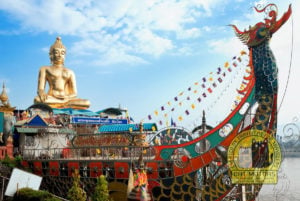6 Sensations Of Khun Chang Kian: Nature, Culture, And Beyond
Khun Chang Khian (Thai: ขุนช่างเคี่ยน, kŭn-châang-kîian) offers opportunities of waking up to a sea of pink sakura flowers, surrounded by lush green mountains and fresh cool air. It’s a small village in the Chang Phueak subdistrict of Chiang Mai, Thailand – home to a White Hmong community that has been living there since 1955.
Located within the Doi Suthep–Pui National Park, the village is about 30 km (18 miles) from the city center. Absolutely stunning from the end of December to January, it’s famous for its spectacular scenery when the wild Himalayan cherry trees (also known as Thai Sakura, Tiger Queen, or Naga Phaya Sua Krong) bloom with pink flowers.
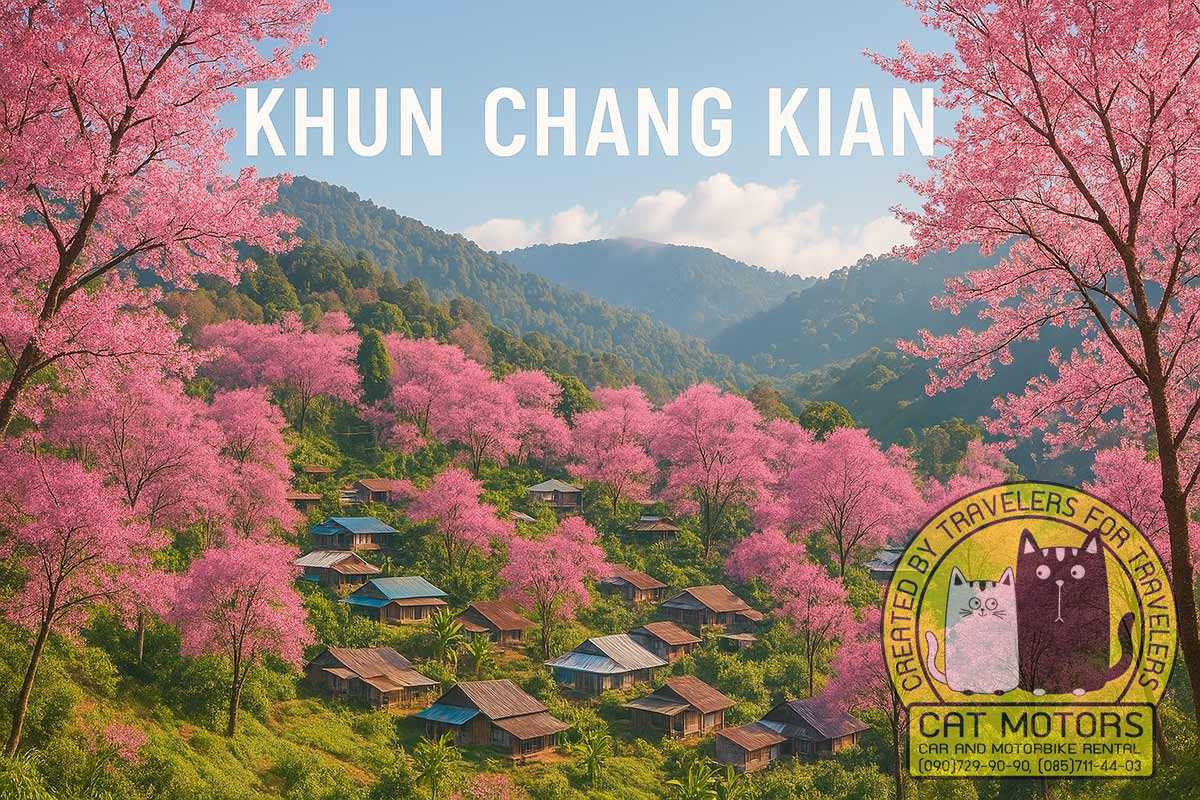
You’ll feel like you’ve stepped into a little slice of Japan in northern Thailand by experiencing this Thai-style Sakura festival. This guide will accompany you through every facet of Khun Chang Kian—journeying there, embracing its experiences, savoring its cuisine, exploring nearby wonders, and collecting tips to enhance your sojourn’s charm!
Tales Across Time: The Legacy
Khun Chang Kian’s history holds stories of how resilience and culture intertwine. Embraced by Doi Suthep–Pui National Park, the village has a lineage enriched by the White Hmong community – a group that traces its roots back to southern China – journeying to Southeast Asia in the 18th and 19th centuries.
Across generations and countries, the journey brought a distinctive culture of customs, language, and beliefs.
In 1955, the village came to life, its origins grounded in the refuge offered to Hmong refugees from Laos—a testament to the scars of the Indochina Wars that echoed far beyond national boundaries. Amidst the civil war’s turmoil in Laos, the Hmong stood as allies alongside the US, only to face displacement once the conflict concluded. Their story was etched into the very fabric of the Hmong hill tribe village.
Legend has it that the village’s name springs from Khun Chang, a hero of the epic Khun Chang Khun Phaen. Tales of a love triangle and the distant past unfold, writing Khun Chang Khian into the fabric of time. Translating Khun Chang Kian to “the resting place of Khun Chang,” the poem brings this lyrical story to life, exploring the very lands that now hold the village.
Amidst lush mountains, Himalayan cherry trees (Prunus cerasoides)—fondly called Thai Sakura—paint the landscape pink. The Chinese planted these cherry blossom trees to guard against erosion, and their blooms create a vibrant contrast against the sky. Since 1978, the Khun Chang Kian Highland Agricultural Research and Training Station of Chiang Mai University has nurtured local agriculture, fostering sustainability and heritage.
The village’s heartbeat resonates during the Himalayan cherry tree’s annual bloom, a spectacle that adorns the landscape for only two weeks between December and January.
Thousands of travelers gather in celebration, drawn by the allure of pink petals and the promise of enchanting photographs. The cherry blossom festival, a jubilant affair, features cultural showcases, exhibitions, and vibrant markets—an embodiment of the village’s spirit, where history thrives as an integral part of the present moment.
The Journey To Khun Chang Khian: How To Get There
Reaching Khun Chang Khian from Chiang Mai is a straightforward venture that is packed with stunning views of Chiang Ma’ ‘s natural backdrop. This tourist attraction is situated in the Chang Phueak subdistrict of Chiang Mai – just 30 km (18 miles) from the city’s core (Google Maps).
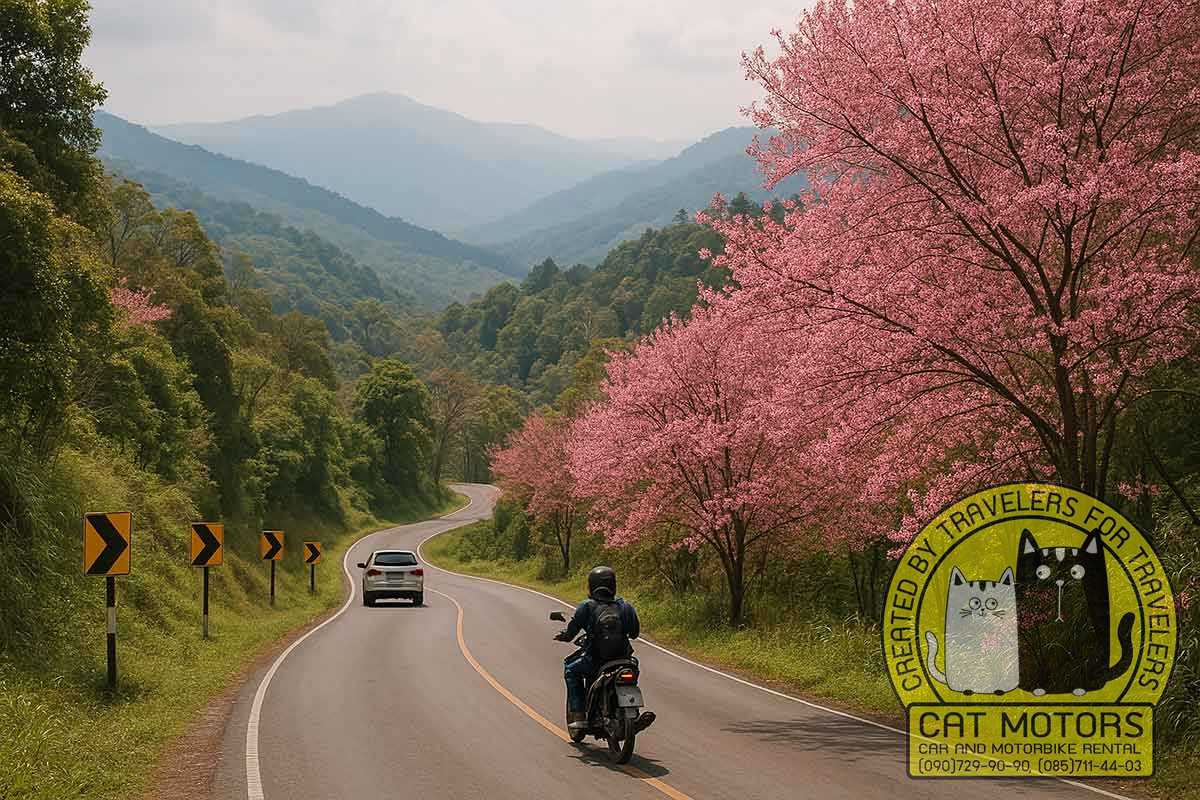
Although the route is marked with signs pointing you toward the village, be prepared for a winding road that can get a bit tricky – especially during the rainy season when certain sections may be muddy. But in terms of traveling, there are a few options you can use to get there:
- Rent a car or motorbike for convenience and comfort: This is probably the most recommended since you can dictate your pace and explore at your own pace. Don’t forget to fill up with fuel, and the Doi Suthep–Pui National Park entrance fee is 50 baht per person and 30 baht per car/bike. You can expect an approximately 1.5-hour drive from Chiang Mai to Khun Chang Khian (with a stop or two in mind).
- Taking a Songthaew: It may be something new to experience for newcomers to Thailand, but Songthaew is a frequently used form of public transport. It’s a nifty red pickup truck offering shared rides. Spot them near Tha Phae Gate or the Chiang Mai Zoo near the old city.
You may want to haggle over the fare with the driver before boarding, which typically averages 500 to 800 baht for a trip – just don’t forget to be polite! Upon arrival at the village entrance, either stroll or rent a motorbike to explore deeper. This method can take about two or more hours.
- Joining a Guided Tour: Simplify your experience and explore neighboring attractions like Doi Suthep Temple or the Hmong Village. Tours from operators can provide a hassle-free adventure. For 3,000 (half day) to 6,700 baht (varied) per person, relish transportation, entry fees, lunch, and an English-speaking guide.
Irrespective of your choice, glancing at the forecast reports before traveling is practical. Keep warm clothing handy, as the mountain air can get nippy, especially in early mornings and evenings. Lastly, ensure your camera joins you because you’re poised to seize the Instagram-worthy vistas when you visit Khun Chang Khian!
A Journey Through Thai Sakura Dreams: What To Do
Rather than just a realm of beauty, Khun Chang Kian offers itself up as a canvas of memories waiting to be painted. It’s packed with adventure, culture, or pure relaxation, catering to every traveler’s craving and evoking the essence of Japan with a distinctly Thai touch. That said, here’s what to expect:
- Cherry Blossom Festival: Cherry blossom festivals don’t only just happen in Japan! Chiang Mai offers its world of rosy enchantment during its cherry blossom festival, which unfolds between late December and January. Khun Chang Khian transforms into a romantic haven as the wild Himalayan cherry trees bloom with delicate pink petals.
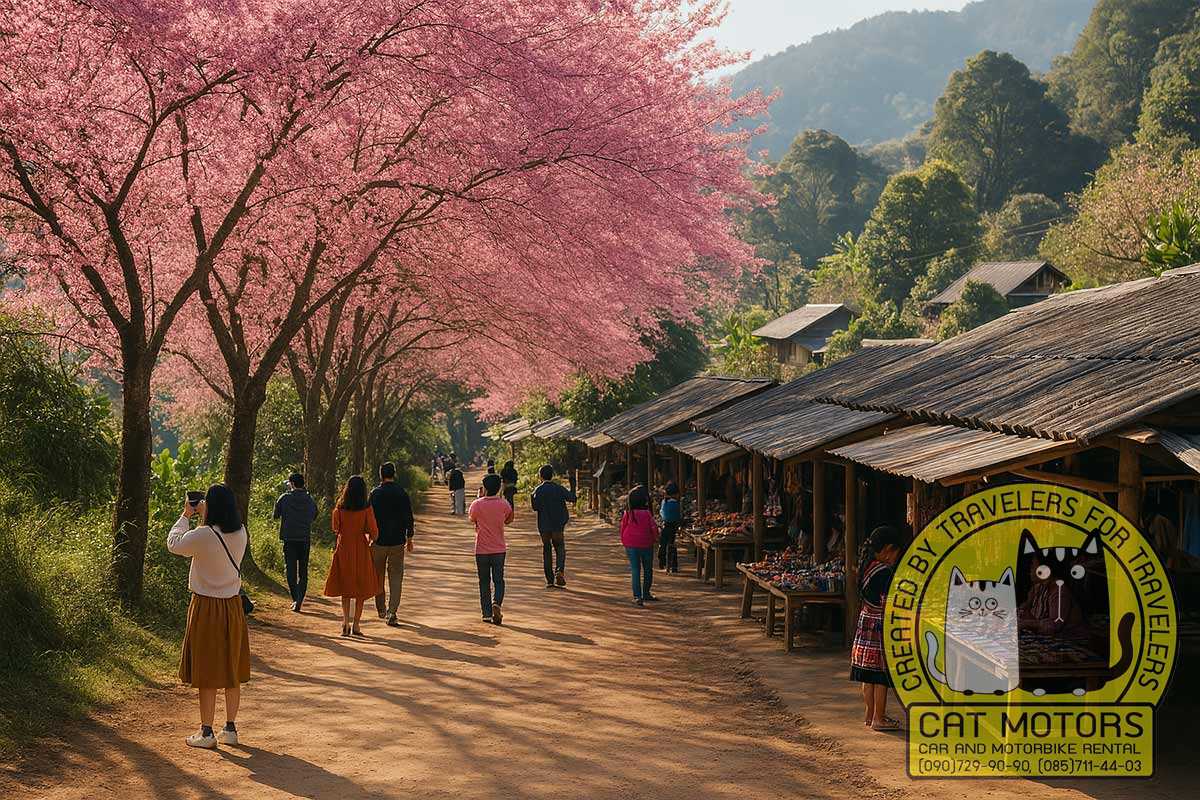
Once you arrive, you’ll want to wander the trails and capture the magical sight of blossoms against mountains and skies. To make the most of it, you can always join locals in celebrating culture through performances, exhibitions, and markets!
- Coffee Plantation Exploration: Coffee fanatics would love a brew or two from this area! A visit to a coffee plantation or farm is a must. Near the Khun Chang Kian research center, an experience takes you to the next level of sustainable coffee farming. You’ll learn the coffee bean’s lifecycle, from cultivation to roasting, and savor some of Thailand’s finest brews!
- Immersive Hmong Culture: The White Hmong community is unique and rich in culture. If you have the time, exploring their history, lifestyle, and beliefs is well worth a fully immersive experience for a visit.
And if you want, you can engage with villagers and shop around for seasonal trinkets. Things like vibrantly hued handicrafts or tangible mementos of their heritage, including clothes, bags, and accessories, are all just sneak peeks of some of the awesome things they have for sale.
- Starry Camping Adventure: Packed with philosophical moments, camping beneath the stars in this area should always be considered! The numerous campgrounds dotting the area offer the ideal location for savoring the clean air, calm breezes, and magnificent night sky.
With many happy campers honing their preferred camping routine, it’s the perfect setting for bonding with friends and family while relishing simple pleasures.
- Adventurous Exploration: For the daring souls, Khun Chang Kian’s trails beckon. Hike, bike, and even camp along rustic routes unveiling diverse flora and fauna. Orchids, ferns, birds, and butterflies await discovery. Let panoramic vistas of the mountainside and the city inspire you. Engage body and mind, fostering a deeper connection to this charming land.
These glimpses are merely a run-up to the treasure trove that is Khun Chang Khian. Its allure extends beyond words, a world infused with beauty, charm, and wonder—a world ready to grasp you.
Exploring Charming Roasting Cafes
The small village charm promises to satiate not only your wanderlust but also your taste buds. So it’s not just about the romance and adventure to look forward to but also a home for coffee aficionados and those seeking authentic local flavors.
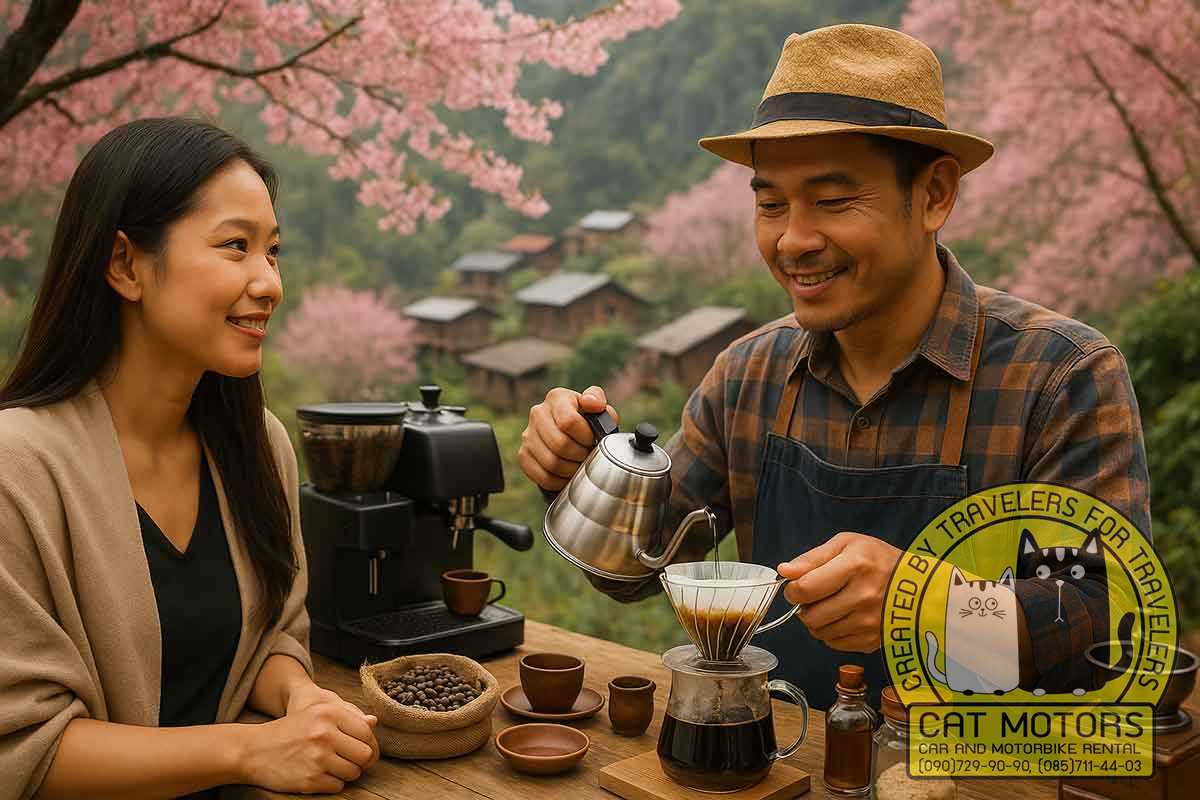
Pampering in coffee culture: A testament to Khun Chang Kian’s rich coffee heritage lies in its affiliation with the Khun Chang Khian Highland Agricultural Research and Training Station. Here, you can relish some of Thailand’s finest coffee, tracing its journey from bean to brew. The aromatic notes of freshly roasted coffee beans greet you with their aromas blending within the village’s relaxing atmosphere.
Local flavors to taste: Beyond coffee, you can sample the Hmong culture through its distinct food and drink varieties. Bite into a world of flavors with spicy noodle soups, grilled sausages, and pork curries. You’ll notice how each portrays the essence of the region’s heritage. Snacks and treats in the area also take on a local twist with treats like sweet potatoes, fried bananas, and fried custard.
Where To Dine
- View Suai Coffee: Nestled amidst breathtaking vistas lies this budget-friendly spot that offers coffee, tea, smoothies, and light bites. A wooden deck invites you to unwind, surrounded by the valley’s most stunning views.
- Fernpresso @Khun Chang Khian: An idyllic setting to unwind, this haven treats you to views and an array of coffees – from espresso to honey-infused blends. Tempt your taste buds with their delectable Thai cuisine!
- BA RUNG Cafe & Homestay: Taste innovation with their unique drip coffee blend while basking in the cozy ambiance. This gem also extends its warmth through accommodation, blending hospitality and flavors.
- Small Cafe: Nestled in the heart of nature, Small Cafe offers a unique blend of stunning jungle vistas and delectable coffee. Inexpensive and packed with character, it’s an ideal stop for a refreshing break.
These are a few of the culinary charms that await at Khun Chang Kian. Venture deeper to unearth more as this village excites your senses, floating away on roasting aromas.
Essential Tips For Your Adventure
Planning a visit to Khun Chang Khian? These tips will ensure you make the most of your trip:
Weather Wise: Khun Chang Kian’s mountain location brings varying weather. But what’s most important is to know when the blooming season is in. Himalayan cherry trees are known to only bloom for around two weeks, and after that, heavy winds can easily remove their petals – so be sure to follow up on the season!
Also, before you go, check forecasts for sunny days or sudden showers. Know that temperatures can range from 10°C (50 °F) to 25°C (77 °F), so you’ll want to pack accordingly.
Dress & Gear: Mountain chill calls for warm attire. Bring layers, rain gear, and sturdy footwear, especially for hikes. Don’t forget sun protection—sunglasses, sunscreen, and hats.
Respect the Culture: Embrace the unique White Hmong culture by dressing modestly and refraining from photographing or touching religious objects. Keep the environment pristine—no littering, and respect local flora and fauna.
Accommodation Planning: With its popularity, booking ahead is wise, particularly during the January cherry blossom season. Options include camping, bungalows, and homestays. The Station is known to offer camping services and alternative accommodation options for the campers. You could also take in the overnight adventure at the Doi Pui Camping Area nearby.
Exploring Nearby Gems
While Khun Chang Kian steals the spotlight, there’s more to explore nearby:
Bhubing Palace: This stunning and royal winter residence is adorned with picturesque gardens showcasing temperate plants and flowers. Open to the public; this palace offers insight into Thai architecture and history. Remember, it’s usually closed during royal family stays (often from January – March).
Wat Phra That Doi Suthep: Perched atop Doi Suthep mountain, this revered temple houses a fragment of the Buddha’s shoulder bone. Accessible via 306 steps or a cable car, it rewards visitors with a panoramic Chiang Mai view and an iconic golden chedi.
Montha Than Waterfall Trailhead: For experienced hikers, this 2.4 km (1,5 mile) loop trail navigates through Doi Suthep-Pui National Park’s forested expanse. Along the way, you’ll encounter the impressive Montha Than Waterfall, glimpses of Chiang Mai’s beauty, and the calming charms of nature.
Hmong Doi Pui Village: Just 4 km (2,4 miles) from Wat Phra That Doi Suthep, this village introduces you to the White Hmong community. You can learn about the Hmong hill tribe village, its history, beliefs, and lifestyle, and explore a museum showcasing their culture. The town also offers incredible viewpoints and a chance to purchase exciting Hmong handicrafts.
GIS
Geographic Data
- Location: Chiang Mai Province, Thailand.
- Coordinates: RWR3+J53, Mae Bua Mung Rd., Don Kaeo, Mae Rim District, Chiang Mai 50300, Thailand
- Elevation: About 1,400 meters above sea level.
Physical Features
- Terrain: Mountainous and hilly, part of the Doi Suthep mountain range.
- Climate: Cool temperate, especially when compared to lower elevations in Thailand.
- Water Sources: Various small streams and waterfalls.
Land Use and Vegetation
- Agriculture: Predominantly used for research on cool-weather crops such as strawberries, coffee, and various flowers.
- Forests: Native pine forests and other evergreen species.
- Settlements: Primarily the Hmong hill tribe community, with some research facilities and tourist attractions.
Infrastructure
- Roads: Limited roads with mainly one major access point leading to the research center and surrounding villages.
- Facilities: Research stations, visitor centers, homestays for tourists, and local shops.
- Utilities: Electricity can be sporadic in certain areas, and water is often sourced directly from mountain streams.
Socio-Economic Data
- Population: Primarily inhabited by the Hmong hill tribe community.
- Occupation: Farming, research, tourism (especially during the blooming season), and craftwork.
- Economic Activities: Sale of agricultural products, handicrafts, tourism-related activities (e.g., guided tours, homestays).
Environmental Concerns
- Deforestation: Although the area is relatively preserved, there’s potential risk due to expansion of farming and infrastructure.
- Climate Change: Shifts in temperature and rainfall patterns could impact the viability of the cool-climate crops under research.
- Tourism Pressure: Over-tourism during certain peak seasons might lead to environmental degradation if not managed well.
Our Summary
Khun Chang Kian is where nature’s work blends with cultural prosperity. Where the past seamlessly weaves with the present and where each step reveals a new soul-touching moment. Whether blossoms, stories, or flavors draw you, it’s an experience that lingers in many hearts of the visitors that yearn for a return. It’s undoubtedly well worth the trip for any outdoor excursion.
FAQ
Khun Chang Khian stands out for its serene mountainous landscapes, traditional Hmong village life, and the opportunity to see the beautiful wild Himalayan cherry blossoms during their blooming season. It’s an escape from the typical tourist spots, offering a more authentic Northern Thai experience.
The best time to see the Himalayan cherry blossoms, locally known as “Nang Phaya Sua Krong,” is between late December and mid-January.
The most adventurous way is to rent a motorbike or scooter and drive up the winding mountain roads. However, for those less confident in their driving skills, hiring a local songthaew (red truck taxi) for a day trip is a popular option.
Absolutely! Being a Hmong village, try the traditional Hmong dishes like sticky rice, pork belly, and locally grown vegetables. Don’t miss out on their freshly brewed mountain coffee either.
The village offers a few homestays and guesthouses. Staying here allows travelers to immerse themselves in the local culture and traditions, making for a unique experience.
Yes, always ask for permission before taking photos, dress modestly, and be respectful of local customs and traditions. It’s also a good gesture to buy handicrafts directly from the artisans, supporting their livelihood.
Definitely! The area is surrounded by lush forests, making it ideal for trekking, bird watching, and enjoying the cool mountain air.
Consider purchasing local handicrafts, eating at local eateries, and maybe even volunteering for community projects if you’re staying longer. This not only supports the local economy but also promotes sustainable tourism.
Generally, yes. The locals are friendly and welcoming. However, always let someone know your plans, especially if trekking, and be cautious when driving on mountain roads.
The Hmong New Year, usually celebrated in December or January, is a vibrant event with traditional dances, music, and costumes. It’s a fantastic way to immerse yourself in Hmong culture.
Given its higher altitude, it can get chilly, especially in the evenings. Pack layers, a light jacket, good walking shoes, and don’t forget your camera!
Yes, many local artisans offer workshops where you can learn traditional Hmong crafts like embroidery or batik. It’s a wonderful way to connect with the culture and take home a unique souvenir.
Explore Northern Thailand’s stunning landscapes and vibrant culture with our comprehensive travel guides. Highlighting the best scenic routes and local attractions, our guides ensure you experience the best the region has to offer. Start by visiting our bike rental in Chiang Mai. Be sure to review our terms and conditions for a seamless experience. With these resources, you can explore mountain trails and charming villages with confidence.
Our travel advice sections offer essential tips on staying safe and enjoying your trip to the fullest. Discover the best times to visit major attractions, learn about local festivals, and find out how to handle different road conditions. These insights will make your journey richer and more enjoyable. Join us in uncovering the breathtaking beauty and rich culture of Northern Thailand, ensuring a safe and memorable adventure.
- Author: Krit Sorenser
- Updated: 12/09/2025
- No Comments



